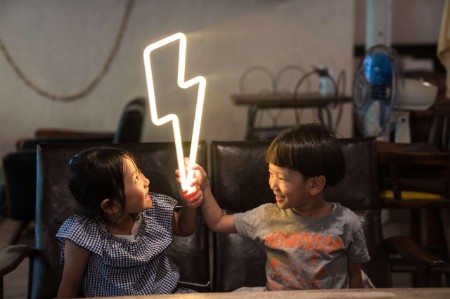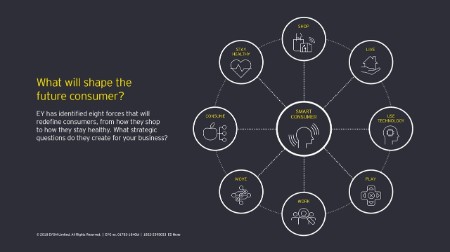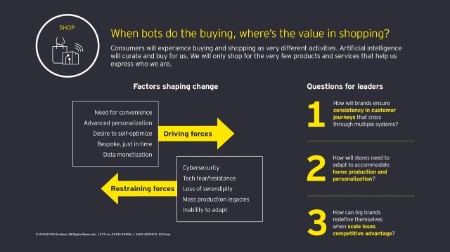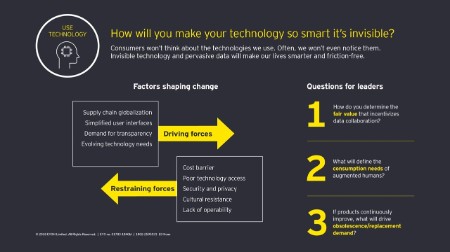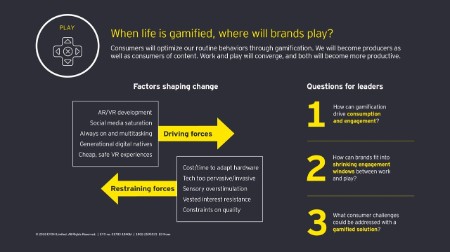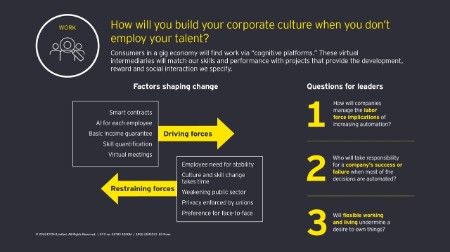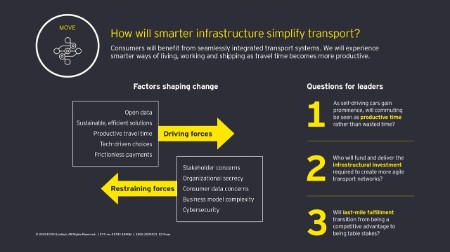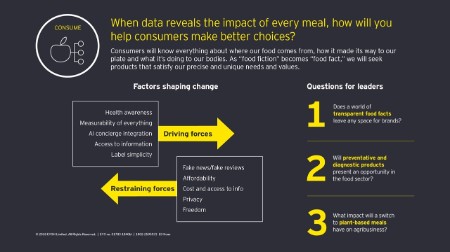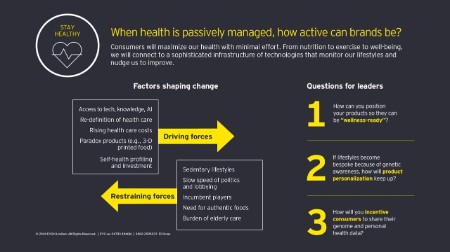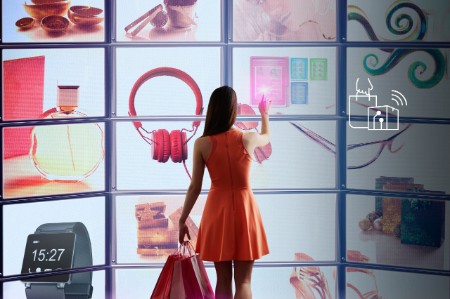
Chapter 1
When bots do the buying, where’s the value in shopping?
Consumers will experience buying and shopping as very different activities.
Most of the purchases we make today require some element of conscious choice. But as AI bots, concierge services and smart-home systems become more intelligent, they’ll complete many of these transactions for us.
Consumers will receive competitively priced and relevant products via technology-based platforms that serve as access points to new buying ecosystems. These platforms will use AI and machine-learning technologies to draw on vast quantities of data and predict or preempt customer behavior. This will disintermediate transactions, payments, fulfillment and brands.
Over time, consumer engagement will polarize. We’ll become completely disengaged from most of the products and services we buy and super-engaged with a few.
In the majority, our personal technologies will evaluate what products or services we need, when we need them and where best to buy them – not just in terms of finding the right price, but also in terms of sourcing brands and suppliers that align with our values.
We’ll trust these intermediary technologies to curate the right choices and purchases on our behalf. Today, 47% of consumers already say they are open to the idea of buying items through a chatbot. And almost half of US consumers say they are willing to share personal information if it gets them a better deal.2
As buying becomes more automated, it will become a very different activity from shopping, which will also evolve. We will actively “shop” for only a select few brands. These purchases will help us express and shape our identities and give us an amazing experience.
The majority of consumer products will become commoditized as a result, and the face of retail will change forever.
Related article

Chapter 2
Will you sell products or access to lifestyles?
Consumers will own fewer things and will pay to use or access whatever we want, whenever we want it.
With the rise of the gig economy, a more nomadic consumer base and the growth of mega-cities, future consumers will continue to move away from owning things. Instead, we will trust on-demand services to meet our needs – as they arise, and just in time. Businesses will need to reflect the new ways people live and work.
Today, companies like Spotify and Uber give us subscription or pay-to-use access to assets and experiences that past generations had to own. Consumers are getting used to this model and the convenience it gives them. They expect everything to be flexible and focused on their needs. The relationships we form with brands – and with one another – is changing.
In the future, this model will apply to a much wider range of products and services. Even the spaces we live and work in will morph to reflect the needs of the moment, with our homes becoming larger or smaller to reflect who’s at home.
As we own fewer things and become less encumbered by place, we’ll be able to move location and shift between new cities with ease. Patterns of global consumption will change as a result.
The United Nations predicts that by 2030, urban areas are projected to house 60% of people globally and one in every three people will live in cities.3

Chapter 3
When health is passively managed, how active can brands be?
Consumers will maximize our health with minimal effort.
Today, it takes thought and conscious effort to live a healthy life. From following an exercise program to reading the nutritional labels on products to booking an appointment with the dentist, we need to actively take care of ourselves. The few health-care technologies that are available to us are relatively dumb.
In the future, once we establish a trusted relationship with providers to share our data, we’ll be able to connect to a sophisticated infrastructure of technologies that actively and automatically monitor, improve and maintain our health and well-being.
We won’t need to think about it, and we’ll barely be aware of it.
From an early age, children will have their future mental and physical health mapped out through detailed analysis of their genome. This map will update as they mature logging their nutritional needs and the exercises they undertake. The services and products they consume will adapt to their evolving health needs.
We’ll eat meals that look and taste like steak, but are actually 3-D-printed plant proteins containing vitamins and nanomedicines designed specifically for our bodies. The US federal government is already spending $1.2b a year to fund nanotechnology research.4 In the future, “paradox products” that look like normal foods and drinks but fulfill invisible, beneficial functions will be common.
Our exercise needs, social activities, meal plans and preventative therapies will be integrated and personalized into every area of our lives, nudging us gently toward self-improvement – all part of a passive consumer experience supported by a smart, ever-evolving system.

Chapter 4
When data reveals the impact of every meal, how will you help consumers make better choices?
Consumers will know everything about where our food comes from, how it make its way to our plate, and what it's doing to our bodies.
Today, what and how we eat is steeped in complexity and shrouded by uncertainty. We don’t really know where our food has come from or how it’s made its way to the plate. Not so in the future. There will be a fundamental shift from “food fiction” to “food fact.”
What we consider to be a good meal will change, as blockchain technology facilitates a completely transparent food system. The environmental impact of each food choice we make will be clear. As a result, we’ll eat far less meat and much more plant-based food.
We’ll learn much more about nutrition, the human body and the personal impact of our dietary choices on our health and well-being and the environment. With reliable data about how our bodies are performing at any moment in time, we’ll be able to eat and drink products that are personalized to satisfy our precise and unique dietary needs.
Today, most of us have to choose between taste, convenience and wellness. For future consumers, this trade-off will disappear. We’ll be able to eat and drink things that are great for our health, are quick and convenient, taste fantastic, and reflect our ethical values.
A recent global survey yielded that nearly 90% of consumers would be willing to pay a premium for products with added health and wellness benefits.5
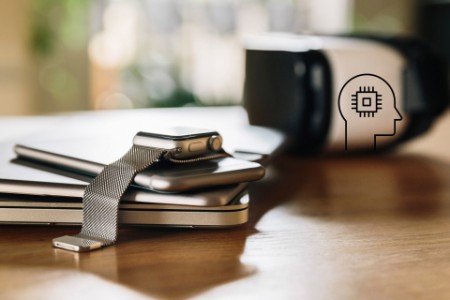
Chapter 5
How will you make your technology so smart it’s invisible?
Consumers won't think about the technology we use as invisible technology, and pervasive data will make our lives smarter and friction-free.
The technologies people use today have become more interactive and better integrated with daily life. But we’re still aware that we’re using them. In the future, we’ll be far less aware of technology – many of the services or devices we rely on will become invisible.
A world where information, technologies and data are fully integrated will remove friction and add incredible value to consumers. With nearly 20 billion “connected things” expected to be in use by 20206, many of the technology interactions we experience today will melt away.
We’d never have to carry IDs, bank cards or door keys; every service we receive can be personalized and adapted to our specific context. This paradigm shift would have a massive impact.
One forecast suggests 10% of global GDP will be stored on blockchain by 2027.7 Costs for businesses, governments and other organizations could be radically lower, and new kinds of product or service would become possible. Companies would be able to optimize their supply chains in ways that are impossible today.
For this level of integration to happen – without vertical and total monopolies forming – different platforms would have to collaborate and exchange information with one another in a fraction of a second.
Automatic, negotiated interaction will need to be a highly intelligent and end-to-end process. The notion of competition will change radically. People will need to learn to trust an AI to make decisions on their behalf.

Chapter 6
When life is gamified, where will brands play?
Consumers will optimize our routine behaviors through gamification so that work and play converge, and both become productive.
Work can be fun and play can be hard work, but the two are generally seen as separate areas of activity. Finding the right balance between them is currently seen as an essential element of personal well-being.
But for many future consumers, the two domains are likely to merge into one: productive creativity.
Today, young people living in countries with a gaming culture spend an average 10,000 hours playing online games by age 21.8 That’s as much time as they will have spent in compulsory education.
Augmented and virtual realities will become an interactive part of everyday life, across content, media, games and entertainment.
As the technologies involved become more complex and relevant, user experiences will evolve to gamify routine behaviors, transforming the mundane into the spectacular. Media will merge into e-commerce as our “brand experiences” become a growing source of entertainment.
Much of the content that we encounter in this new “digital layer” will be created by future consumers themselves. Everyone will become a producer: remixing content and editing their experiences for the entertainment of others.
Already, we can see micro-influencers and Instagrammers transforming their hobbies and interests into valuable streams of income. They are just the first wave.
Each future consumer will need to find a vocation and a space where they are ready to be “virtually present” day and night.
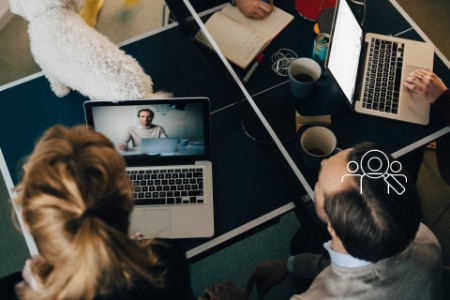
Chapter 7
How will you build your corporate culture when you don’t employ your talent?
Consumers in a gig economy will find work via "cognitive platforms."
The notion of a “job for life” is over, and work is increasingly fragmenting. But the nature of work itself is also changing fundamentally.
Sixty-five percent of children starting school this year will assume careers in jobs that don’t yet exist.9 And 57% of jobs in OECD countries are at risk of being replaced by automation.10
Future consumers will develop a completely new form of career led by a range of eclectic work experiences, which will combine to help them meet their personal, developmental and financial needs.
Instead of being a potential employee in a fixed-skills workforce, more people will become contractors or freelancers through “cognitive network” platforms.
These platforms will use AI and user data to match projects with people based on expertise, time and wage expectations. They will facilitate personal development, while managing the administrative processes of payment, tax and HR.
Technologies such as virtual reality and AI bots will enable people to perform efficient remote work. But future consumers will often choose shared work environments to maintain social and professional relationships.
Employers will be able to take on a greater variety of tasks, while at the same time reducing their administrative costs.
Governments will collaborate with “cognitive network” platforms to ensure worker rights, keep tabs on the economy and implement automated taxation systems.

Chapter 8
How will smarter infrastructure simplify transport?
Consumers will benefit from seamlessly integrated transport systems.
City planners have been talking about integrated transport infrastructure for decades. Yet for most citizens, getting from A to B can be messy, involving several stages and prone to setbacks like congestion and public transport delays.
Future consumers will use travel services that are better connected and more environmentally friendly. Transport infrastructure will adapt to reflect the travel patterns of its users.
Citizens will have control of their data and will be able to use it to move easily between any transport mode available, within the city or the region. The same would apply to companies moving goods.
This type of data exchange will enable cities to manage traffic flows on an instant, live basis. Transport authorities will capture travel patterns and overall city “busyness,” in real time, adapting the tools at their disposal to manage those needs efficiently.
If one in four cars on the road are autonomous by 2030 11, the number of vehicles that can use a road at one time will increase, as will the scope to reflow traffic. Equally, if more employees are working flexible hours and locations, then peak-time pressure points will lessen.
With greater awareness of how each person’s journey is dependent on the travel plans of others, people could fundamentally shift their attitude toward transport. Citizens could focus not on their personal needs, but on “the needs of the system.” Today, just 15% of millennials feel it’s “extremely important” to own a car. 12
Summary
Companies that understand the eight key forces shaping the lives of tomorrow’s consumers will be better able to adapt now.
